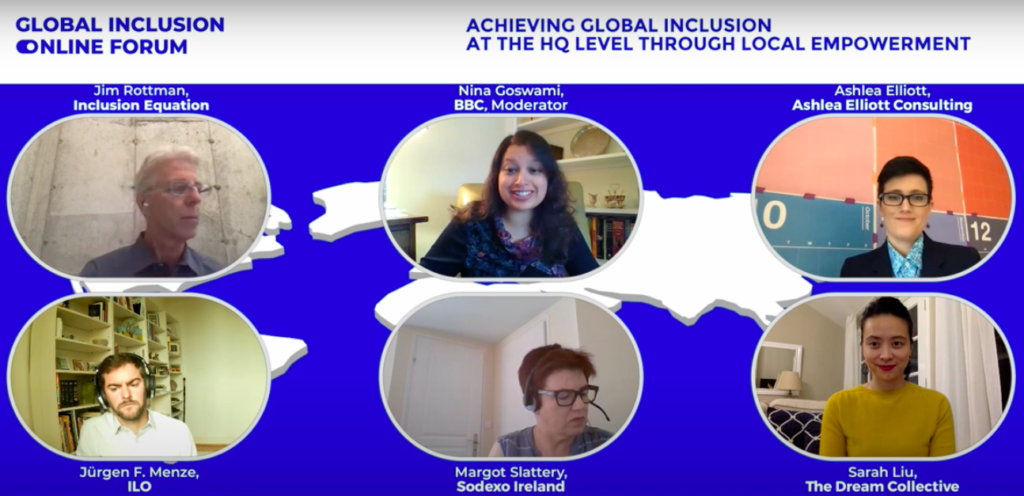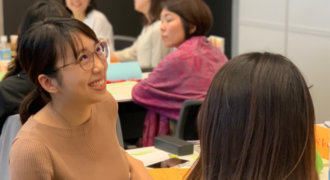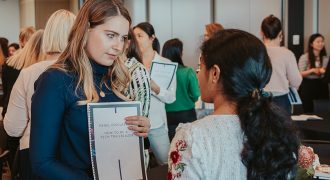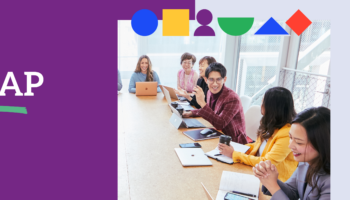
The 2020 Global Inclusion Online Forum brought together diversity, equity and inclusion leaders from around the world to discuss leading practise, trends and shared wisdom to increase the effectiveness of DEI initiatives. The following insights were captured from the panel session, Achieving Global Inclusion at the HQ Level Through Local Empowerment, featuring our Managing Director, Sarah Liu, alongside phenomenal leaders in the DEI space.
Moderated by:
- Nina Goswami, Creative Diversity Lead & Journalist, BBC
Other panelists:
- Jim Rottman, Global Head of Inclusion & Diversity, Roche, CEO of Inclusion Equation
- Margot Slattery, Global Chief Diversity & Inclusion Officer, Sodexo
- Jürgen Menze, Disability Inclusion Officer, International Labour Organization
- Ashlea Elliott, CEO at Ashlea Elliott Consulting, Founder at Peace Is Possible, Champions Council at Nothing But Nets, United Nations Foundation
Organisations used to exist for the core purpose to make a profit. Now, organisations have a responsibility to the people they serve, their employees and society more largely. There has been a global awakening of this social contract that, if ignored, will likely hinder business’ success. With the global nature today’s businesses operate in, how can organisations ensure effectiveness of their DEI initiatives on both a local level and global scale?
Diversity targets: yes or no?
Organisations should focus on effectively embedding inclusion in the culture first and then work toward diversity targets. What gets measured is what gets done in the corporate world, so there does need to be some measurable outcome and ways of holding leaders accountable in order for organisations to see success. Targets don’t have to be limited to outcomes, they can also be incorporated into the process and the results will follow. For example, if the intention is to hire 50% female candidates, are there 50% women on the interview panel?
The issue with using certain types of metrics is that they objectify individuals by counting them and can create harm if they feel they need to disclose personal information that they may not have otherwise wanted to. Organisations need to architect inclusion to eliminate all structures of inequities, allowing for full agency, participation and decision-making for those with both visual and invisible differences. Inclusion should be a precondition that is built into the culture and creates a positive environment for everyone to thrive.
How can organisations effectively implement qualitative measurement?
When considering measuring DEI efforts and their effectiveness, organisations should consider qualitative measures that capture insights from all groups within the organisation. When gathering feedback from employees, it’s crucial to consider firstly if the right questions are being asked that consider the impact of initiatives on different people. For example, creating anonymous employee satisfaction surveys that captures how different minority groups are feeling without them having to personally disclose. Consider whether the answers indicate that it’s a “best place to work” for everyone, or only certain groups.
Following this, it’s imperative to listen deeply to the feedback provided and respond accordingly by acknowledging it and demonstrating that it has been taken into consideration and will be used in designing future initiatives or improving existing ones.
Organisations need to proactively create a psychologically safe space for open conversations to discuss any hesitations or resistance to avoid micro-aggressions that can arise and hinder progress. It’s essential that employees don’t feel individuals are being hired and promoted purely to meet diversity targets.
Local vs. global efforts
The line between local and global has been blurred, particularly with the shift toward virtual and remote working, which has been greatly accelerated as a result of COVID-19. When country to country solutions are created, it increases the number of fragmented solutions that are trying to achieve DEI. Therefore, strategies need to be truly inclusive and holistic, setting the goals and metrics in consideration of all teams and locations.
An effective way to consider DEI in consideration of local and global is through a macro lens which frequently zooms in on the micro-level. There are elements of inclusion architecture that are the same and standards that will be similar around the world as they are based on the universal declaration of human rights and the UN sustainable development goals. However, the specific structures of inequalities and exclusions will often be unique to the context. There is no one size fits all approach, but a universal approach can be adapted by applying a micro-lens that takes into consideration the local challenges and how they impact employees and the wider organisation.
For example, in Pakistan, one organisation sat down with female employees and asked them, “What is the greatest barrier to taking on a bigger role?”
One woman answered “I can’t drive, so won’t be able to take on more responsibility or increased hours.”
The organisation responded by arranging a driver for her and then proceeding to promote her. In this instance, a global approach wouldn’t have worked, it was essential to provide a tailored solution for the specific problem.
Effective implementation in the organisation
Educating around exclusion and how different types of exclusions exist and isolate minority groups within the workplace is extremely powerful. An effective way to achieve this and to scale is by training a group of people, helping them to understand deeply and then take the learnings back to the organisation.
Any communication or messaging around DEI needs to be matched with a strong strategy to support it and full transparency. As well as ensuring there is clarity around the message and the actions expected of teams and the role people are expected to play. These goals should be interwoven with the company’s values and mission.
Organisations need to actively involve those they are creating initiatives for in the design and implementation, by listening to and learning from them. The best way to learn is by endeavouring to understand the lived experiences of these individuals and using this to inform policies and procedures.
For example, a photographer taking photos of people with disabilities asked them “How do you want to be portrayed?”
He didn’t assume, he didn’t instruct, he allowed them to inform him as to how they would be most comfortable. This reminds us that small but well-considered actions can have a big impact.
Diversity without inclusion
Diversity without inclusion is meaningless: the presence of diverse talent alone does not make you an inclusive organisation. You can have a diverse makeup of individuals, however if you are not doing anything to encourage them to have full agency and decision-making and proactively eliminating barriers, then you are not addressing the issue. If when they speak, they are not listened to, you are not being inclusive. By focusing on providing development opportunities and an inclusive environment for all people, diversity will follow. Organisations should bring an inclusive lens to all decision-making: how will this impact different groups within the organisation?
There is tremendous power in the collective sharing of leading practise, what works and what doesn’t work so that we can continually iterate and create better processes. Nobody has all the answers, bringing all the best knowledge and insights together is key and businesses need to be open to collaborating in the pursuit of this. It was an absolute pleasure to be part of such a rich and insightful conversation and we look forward to our involvement in the 2021 forum.
Written by Angelica Hunt, Growth Coordinator at The Dream Collective








